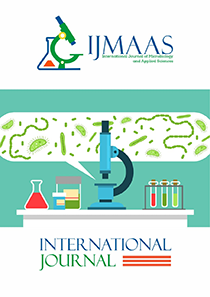Parasitological Investigation of Dump Sites in Obio/Akpor Local Government Area of Rivers State, Nigeria
Vol. 4, Issue 1, 2025
KEYWORDS
Parasitological survey, refuse dumpsites, leachate, Entamoeba histolytica, Ascaris lumbricoides.
Abstract
Waste management is an important sanitary and public health problem in Nigeria which seems to defy solution. Refuse dump sites are ideal breeding places for various parasitic agents that could impact on the environment and quality of life. This survey was aimed at investigating the parasitic agents associated with the refuse dumps sites of Obio/Akpor local government area, Rivers State, South-south, Nigeria. A total of 420 samples of refuse sludge were collected from the study area and were examined using Baerman funnel method. From the results, 301 (71.7%) samples were positive for parasites. The rate of single parasite infestation was 268 (100%) while mixed or multiple parasite infestation was 33(78.5%). Rumuokrushi (oil mill area) recorded the highest prevalence of 58(21.64%) while Choba had the least prevalence of the parasites recovered 12(4.49%). There was a statistically significant association between the prevalence rate of the parasites in relation to location of the refuse dumps (X2 = 16.9, df = 9, P < 0.05). The parasites species identified in Obio/Akpor include Ascaris lumbricoides as the most common parasite encountered 95(35.45%) followed by Entamoeba histolytica 75(27.99%), while Strongyloides stercoralis recorded the least prevalence 21(7.83%). There was a significant difference in the rate of occurrence of the parasites identified (X2 = 9.49, df = 4, P < 0.05). The presence of these parasites in refuse dumps constitute a potential hazard to individuals since these parasites become dispersed in the environment through flies, poor personal hygiene setting of unwashed fruits and vegetables and inefficient environmental sanitation. Regular evacuation of waste materials and a well planned waste management for residents within the site is crucial to break the transmission cycle of these parasites forstall the spread of pathogenic organisms.
Current: Vol. 4, Issue 1, 2025

Call for papers
The International Journal of Microbiology and Applied Sciences warmly welcome your valuable articles for publication.
